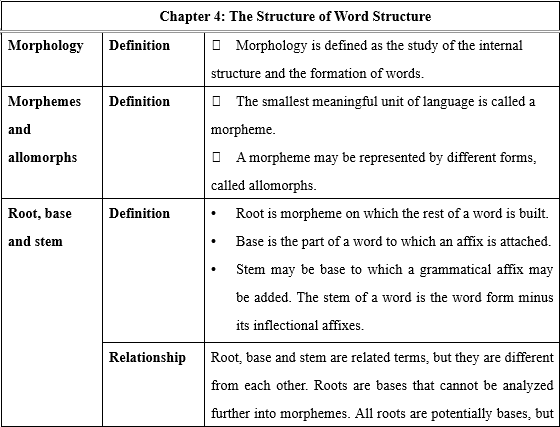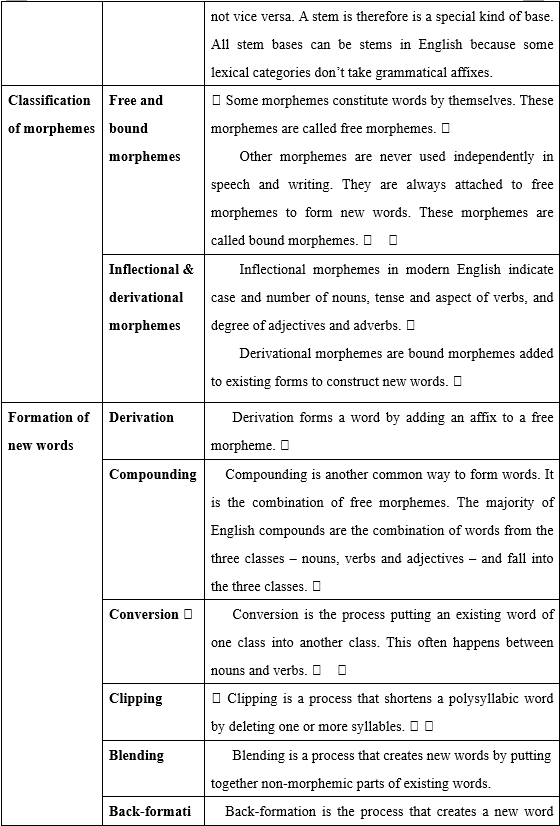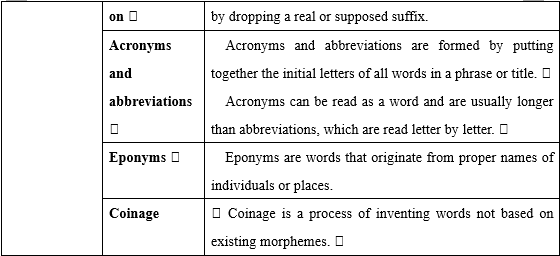课前准备:
预习第四章,结合自己实际情况,标记出比较难理解的地方。
教师导引:结合学生学习词汇的经历,让学生试着谈论自己对相关术语的理解。
小贴士:是否在自身语言的学习过程中,思考过本章的某些内容?通过本章内容的阅读,自己对词汇本身有了哪些新的认识?
小试牛刀
Use some examples to illustrate one of the forms of word formation——derivation.
参考答案:
Derivation forms a word by adding an affix to a free morpheme. Since derivation can apply more than once, it is possible to create a derived word with a number of affixes. For example, if we add affixes to the word friend, we can form befriend, friendly, unfriendly, friendliness, unfriendliness, etc. This process of adding more than one affix to a free morpheme is termed complex derivation.
Derivation does not apply freely to any word of a given category. Generally speaking, affixes cannot be added to morphemes of a different language origin. Derivation is also constrained by phonological factors. Some English suffixes, most of which are Latin origin, also change the word stress.
学习目标
重点
the concept of morphology
free morphemes
bound morphemes
inflectional and derivational morphemes
derivation and compounding
blending
eponym
conversion
难点
inflectional morphemes indicate:
(case and number of nouns )
(tense and aspect of verbs )
(degree of adjectives and adverbs )
complex derivation
知识结构




